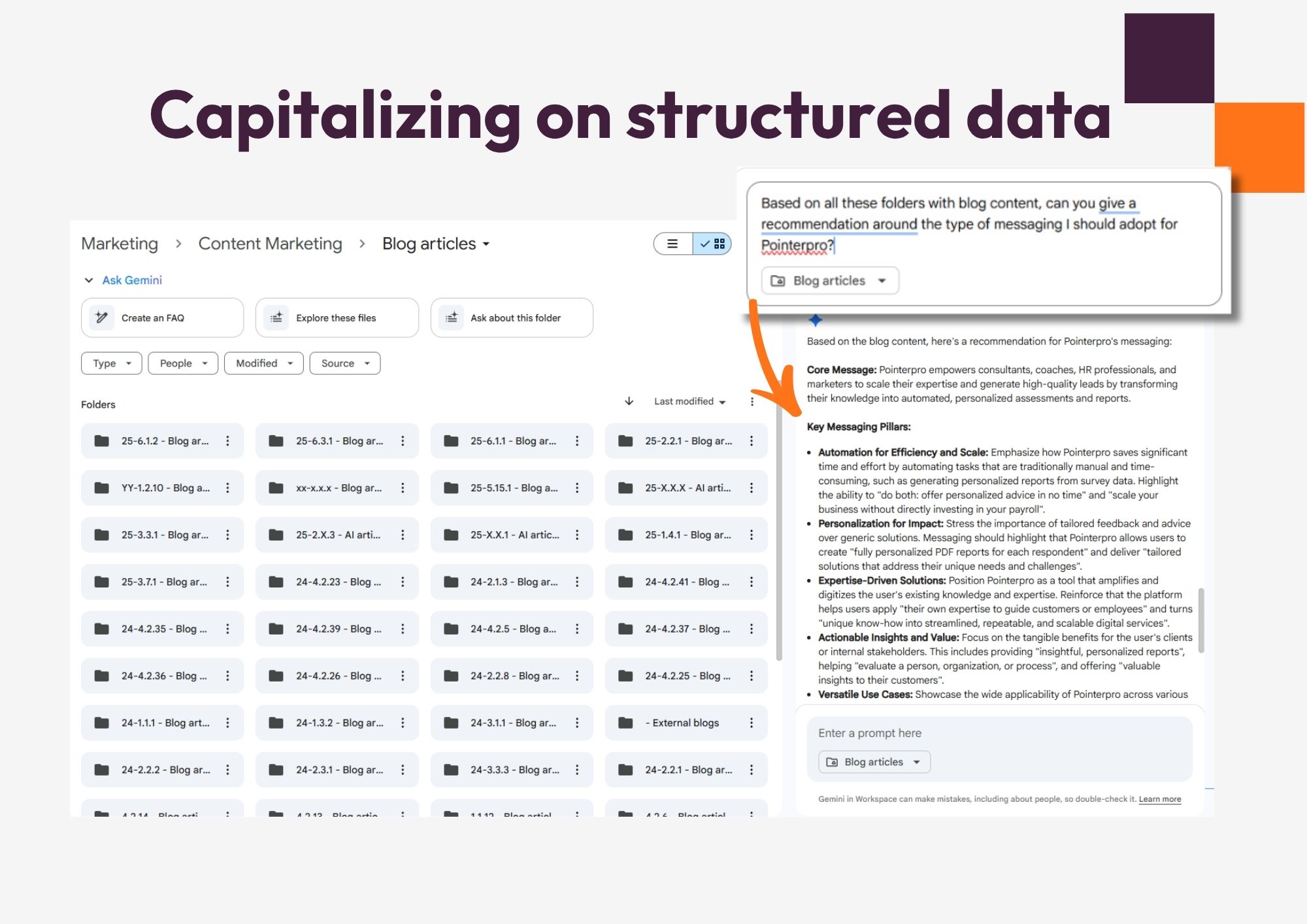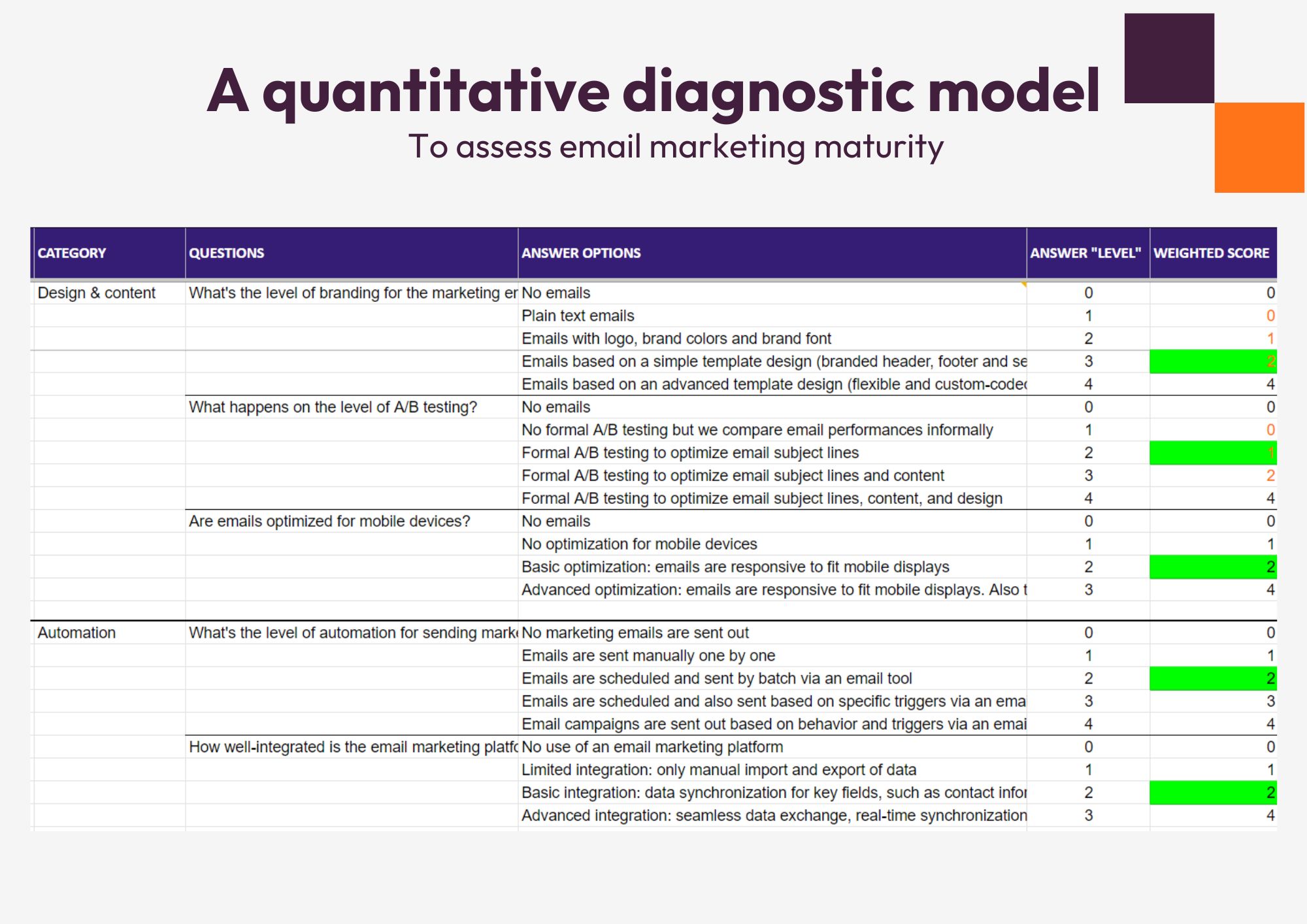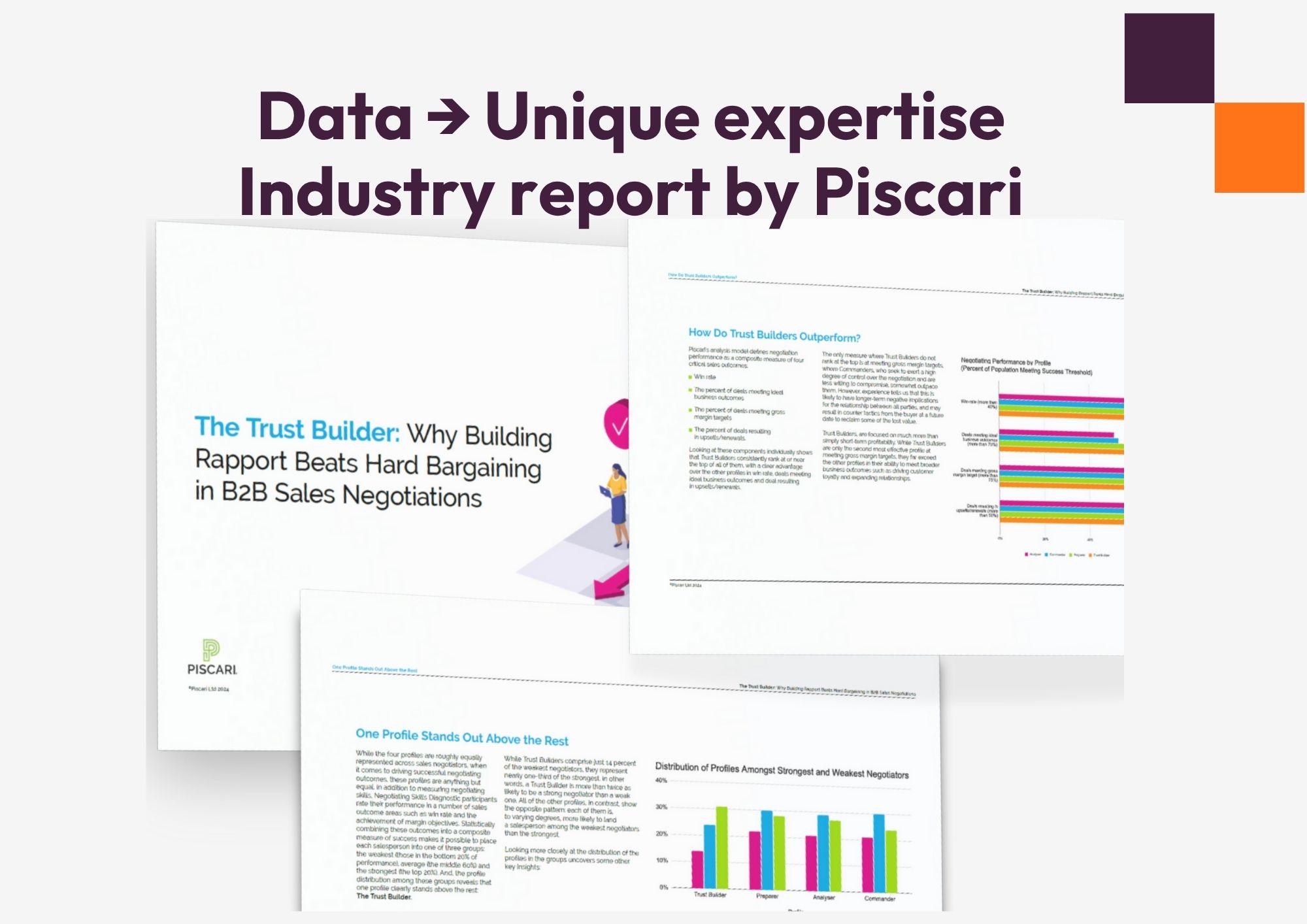Scaling your consulting expertise with online tools means using a structured, tool-powered approach that incorporates personalization. I call it the C‑O‑N‑S‑U‑L‑T pathway. It turns your unique know‑how into streamlined, repeatable, and scalable digital services.
In this article, you’ll learn why digital tools are the growth engine and how to follow the CONSULT pathway for making your own professional services business scalable.
Automation makes a lot of well-meaning consultants uneasy. Yes, your insight should be fully your own, 100% human. But your process? That should be 60-80% repeatable.
Let’s break down a typical consulting engagement. About three or four of those stages can be templated without compromising the quality of your thinking:
So that’s about four out of five steps with real potential for automation, and therefore an enormous opportunity to gain efficiency.
There’s probably more to automate than you suspect
If you’re running or leading a consulting business, you might be reinventing the wheel more often than you realize. Because each new customer feels unique to you. And I get that. When I was a consultant at DXC and PwC, implementing technology solutions, that was certainly my experience. But when I came to think of it, it was mostly on an emotional, decision-making level.
Most projects had some kind of tailored deliverable that made customers choose us. But beneath that satisfying, personal touch? A mountain of repetitive work – not in the least, analysis to reveal which custom twist exactly this particular project needed to be successful.
To answer this question, you simply need to ask yourself another one first: What is your customer paying you for (and what not)?
A consultancy is a business, after all. To be performant, you need to reduce the time you spend on things your customers aren’t paying for. That’s the oldest piece of wisdom in the consulting book.Nonetheless a 2024 study by Business Process Incubator still found that professionals spend over 50% of their time creating or updating documents – PDFs, spreadsheets, slide decks… Is that what your customer is paying for? Not in their mind.

This means half of your week might be spent building things you’ve already built before, just slightly reworded. And that time isn’t always billable, but overhead. It’s not the work your customers care about. They want you to deliver.
And for that I’d like you to consider the CONSULT pathway.
Because they let you decouple your value from your time or availability.
Instead of solving the same type of problem over and over manually, online tools let you build digital systems that capture your thinking once and apply it infinitely – enriched by new data points that come in, if you like. Their online accessibility means you can turn your expertise into a kind of self-service.
In consulting that means standardizing diagnostics, automating reporting, and personalizing insights at scale – without being stuck in execution mode 24/7. That’s how you grow without cloning yourself.
Think of online tools as leverage multipliers. They don’t replace your expertise – they give it wings. They turn your one-on-one value into one-to-many impact.
That’s where the CONSULT pathway comes in.

This isn’t just another productivity hack. It’s a mindset (and method) for turning your hard-won consulting knowledge into digital leverage. Each step is a gear in the system that lets you scale insight, impact, and income, without sacrificing the human touch.
Every scalable system starts with something unique that you have: your domain knowledge, experience from past projects, and sharp intuition. But instead of letting it live only in your head, you systematically capture it.
How? Through project retrospectives, important screen recorded meetings from the past, voice notes, white papers, articles and webinars that have been valuable or maybe that you even worked on yourself, etc. Think of this as starting to create the “source code” of your consulting brain.
This is where you start turning scattered ideas into a repeatable system. You organize the assets I just mentioned in one shared location. But don’t just data dump. You need to put a data governance strategy in place, so that things are searchable and logically grouped.
This is your consulting OS. The more you invest in organizing it, the faster you move, and the easier it becomes for others to collaborate, contribute, or even take over delivery when needed.
Organizing isn’t just about “putting stuff in folders.” You’re also making decisions about who has access to what, what’s considered a trusted source, and how updates or improvements are made over time. I’m not talking about enterprise-level bureaucracy here. Just enough structure to avoid chaos:
This level of governance makes your knowledge assets durable. So they don’t just support one project, but every future one too.
With AI tools like Gemini on your Google Workspace this data hygiene really can pay off very quickly in many ways. In the example below you can see our copywriter/content marketer, Jeroen De Rore’s blog article folder structure resulting in an easy path for AI to summarize the Pointerpro messaging, in case someone else would work on Pointerpro marketing content.

Raw insights are messy. You can’t scale chaos. This step is about bringing consistency to the way you assess, advise, and act.
It’s where you start spotting recurring patterns in your captured knowledge and translate them into structures you can reuse. Think:

This is where your intuition gets codified. Not to replace your judgment – but to enhance your consistency and clarity.
Normalizing is what makes your approach measurable, testable, and scalable. It’s how your intellectual capital becomes a business asset, instead of just “how you work.”
Once your expertise is captured, organized, and normalized, you’re ready to show the world how you think, what you stand for, and what you solve better than anyone else.
I’m not telling you to give away the farm. Don’t overshare but publish just enough of your know-how to:
In practice, that could look like:
This: Mike Lander from consulting firm Piscari built a training needs assessment using Pointerpro and collected over 1,300 anonymized responses. Instead of letting that insight sit idle, he turned it into a data-backed report that reveals the biggest skill gaps and training priorities across organizations.

The result? A lead-generating thought leadership piece on Forbes that positions Piscari as a strategic expert in sales talent development – all powered by insights from actual data.


The assessment and associated insights have enabled my consultancy to build deeper, trusted relationships with strategic partners, that have material long-term value to my business – Mike Lander (Founder of Piscari)
By now, you’ve built a solid knowledge system. You’ve captured, organized, normalized, and shared your expertise to peak potential customers’ interest in you.
Now, the CONSULT pathway leads you through the realms of tailored customer recommendations and project delivery.
This is where you let your insights deliver themselves. Now, as I mentioned in the beginning, I remain convinced that a big part of your project delivery will always demand real-time presence, but when it comes to delivering your advice, even highly personalized, you have great options to automate and scale.
In the “Normalize” stage, I mentioned you could turn documented knowledge and data into “diagnostic templates.” Another way to label it would be “frameworks,” or “models.”
With Pointerpro, consultants transform theirs into actual self-assessments that give customers an instant “health check” in whatever domain the consultant focuses on.
Something like this quick sample. Go ahead and answer the questions to get a personalized report (no email or contact info required).
This is what Pointerpro is all about for them as they built white-labeled assessments like these with our platform.
Other examples of turning know-how into self-service formats for consultancy customers?

These tools don’t just deliver value on autopilot, they start conversations and lay the groundwork for deeper conversations and effective collaboration.
And the best part? They make your methodology visible, tangible, and scalable, without diluting the quality of what you deliver.
A scalable system is one that is also built to learn and improve on itself.
At this stage, you’ve shipped your ideas into the world, in the form of advice, training, or service delivery. Feedback is the fuel that keeps your knowledge system relevant.
You’re not just asking, “Did you like it?. The questions you need to ask your customers, and yourself are these:
There’s a bunch of ways to loop the feedback back into your system:
You’ve captured your know-how, organized and refined it, shared it to position yourself, and used it to deliver value at scale. Now comes the moment where you no longer need to be the bottleneck to your system: you train others to run it.
This could be:
The point is: You’ve turned your expertise into a teachable system. That means you can grow without burning out, expand without lowering standards, and step back without the wheels coming off.
Train your team with the same intentionality you built your system:
To scale your consulting, you don’t need clones of yourself. You need clarity, structure, and leverage.
The CONSULT pathway helps you do exactly that: capture your edge, systematize your thinking, and build a business that runs on more than just your billable hours.
It’s not about doing less. It’s about doing the right things once, and letting systems, tools, and people carry them forward. That’s how your expertise stops being a bottleneck and starts becoming a force multiplier.

"We use Pointerpro for all types of surveys and assessments across our global business, and employees love its ease of use and flexible reporting."

Director at Alere
"I give the new report builder 5 stars for its easy of use. Anyone without coding experience can start creating automated personalized reports quickly."

CFO & COO at Egg Science
"You guys have done a great job making this as easy to use as possible and still robust in functionality."

Account Director at Reed Talent Solutions
“It’s a great advantage to have formulas and the possibility for a really thorough analysis. There are hundreds of formulas, but the customer only sees the easy-to-read report. If you’re looking for something like that, it’s really nice to work with Pointerpro.”

Country Manager Netherlands at Better Minds at Work
By systematizing the thinking behind their work, not the human touch. Tools like diagnostic assessments, e-learning, and curated templates allow for high-impact delivery without removing the personal connection during critical interactions.
The biggest bottleneck is often the consultant themselves — when their know-how only exists in their head. Others include lack of reusable tools, inconsistent delivery, and no mechanisms to gather and act on feedback at scale.
Start by documenting repeatable advice and frameworks. Then translate those into formats like self-assessments, mini-courses, or diagnostic tools. Platforms like Pointerpro help you productize this knowledge into interactive experiences.
Because without feedback, your models stagnate. Feedback loops (e.g. usage analytics, survey data, NPS) help you identify what works, what needs improvement, and what to double down on — making your system smarter over time.
Begin by capturing your expertise. Record what you do, why you do it, and how you explain it to clients. Voice notes, meeting recaps, and frameworks you already use are the raw materials of your future consulting system.
Want to know more?
Subscribe to our newsletter and get hand-picked articles directly to your inbox




